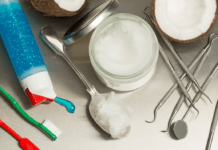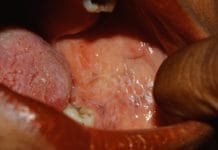Are you in need of CE credits? If so, check out our peer-reviewed, self-study CE courses here.
Test Your Dental Sealants Knowledge
1. What year were sealants introduced?
Sealants were introduced in the 1960s by Michael Buonocore to prevent occlusal decay. Michael Buonocore and his co-worker, E.I. Cueto, published the first paper on the successful application of pit and fissure sealants in 1967. Michael Buonocore's research also aided in the development of adhesive restorative techniques.
Handelman, S.L., Shey, Z. Michael Buonocore and the Eastman Dental Center: A Historic Perspective on Sealants. J Dent Res. 1996 Jan; 75(1): 529-34. doi: 10.1177/00220345960750010401. PMID: 8655756. Retrieved from https://pubmed.ncbi.nlm.nih.gov/8655756/
Ahovuo-Saloranta, A., Hiiri, A., Nordblad, A., et al. Pit and Fissure Sealants for Preventing Dental Decay in the Permanent Teeth of Children and Adolescents. Cochrane Database Syst Rev. 2008 ;(4): CD001830. doi:10.1002/14651858.CD001830.pub3. Retrieved from https://www.cochranelibrary.com/cdsr/doi/10.1002/14651858.CD001830.pub3/full
Khetani, P., Sharma, P., Singh, S., et al. History and Selection of Pit and Fissure Sealants – A Review. Quest Journals. Journal of Medical and Dental Science Research. 2017; 4(5): 5-12. Retrieved from https://www.researchgate.net/publication/326843132_History_and_Selection_of_Pit_and_Fissure_Sealants_-_A_Review_Quest_Journals_Journal_of_Medical_and_Dental_Science_Research_Volume_4_Issue_5_2017_PP_05-12
2. Placing sealants over early (non-cavitated) lesions prevents the progression of the lesion.
Evidence-based clinical recommendations include applying sealants on early non-cavitated lesions. The American Dental Association Council on Scientific Affairs found "Placement of pit-and-fissure sealants significantly reduces the percentage of noncavitated carious lesions that progress in children, adolescents and young adults for as long as five years after sealant placement, compared with unsealed teeth" and "There are no findings that bacteria increase under sealants. When placed over existing caries, sealants lower the number of viable bacteria by at least 100-fold and reduce the number of lesions with any viable bacteria by 50 percent."
Beauchamp, J., Caufield, P.W., Crall, J.J., et al. Evidence-based Clinical Recommendations for the Use of Pit-and-fissure Sealants: A Report of the American Dental Association Council on Scientific Affairs. J Am Dent Assoc. 2008; 139(3): 257-268. doi:10.14219/jada.archive.2008.0155. Retrieved from https://jada.ada.org/article/S0002-8177(14)61434-3/fulltext
3. Sealants are effective in reducing occlusal caries incidence in permanent first molars of children, with caries reductions of 76.3% at four years, when sealants were reapplied as needed. Caries reduction was significantly lower at nine years from initial treatment, with no reapplication during the last five years.
Though caries reduction was slightly lower at 65% nine years post initial placement in teeth with no reapplications, it was not significant. These findings indicate sealants placed with no reapplication or follow-up can still reduce caries risk in children by up to 65%, making sealants an important preventative measure in caries risk reduction in children. Data collected from private insurance companies as well as Medicaid showed an association with sealant placement on first and second permanent molars and reduced incidence of restorative services on these teeth.
Beauchamp, J., Caufield, P.W., Crall, J.J., et al. Evidence-based Clinical Recommendations for the Use of Pit-and-fissure Sealants: A Report of the American Dental Association Council on Scientific Affairs. J Am Dent Assoc. 2008; 139(3): 257-268. doi:10.14219/jada.archive.2008.0155. Retrieved from https://jada.ada.org/article/S0002-8177(14)61434-3/fulltext
4. Sealant placement is beneficial for which of the following age groups?
According to the evidence-based dentistry model supported by the American Dental Association (ADA), sealants benefit children, adolescents, young adults, and adults. Specifically for the prevention of caries in healthy teeth as well as teeth with non-cavitated lesions. Keeping in mind caries risk can change over time; therefore, clinicians should be diligent in re-evaluating each patient's caries risk periodically.
Beauchamp, J., Caufield, P.W., Crall, J.J., et al. Evidence-based Clinical Recommendations for the Use of Pit-and-fissure Sealants: A Report of the American Dental Association Council on Scientific Affairs. J Am Dent Assoc. 2008; 139(3): 257-268. doi:10.14219/jada.archive.2008.0155. Retrieved from https://jada.ada.org/article/S0002-8177(14)61434-3/fulltext
5. Sealants can significantly reduce bacteria levels in cavitated lesions.
bacteria level by anywhere between 100 to 1,000-fold. These studies also showed sealants prevented bacteria that may remain from progressing. When fermentable substrates are blocked, bacteria appear not to be capable of exerting cariogenic potential.
Oong, E.M., Griffin, S.O., Kohn, W.G., et al. The Effect of Dental Sealants on Bacteria Levels in Caries Lesions: A Review of the Evidence. J Am Dent Assoc. 2008; 139(3): 271-358. doi:10.14219/jada.archive.2008.0156. Retrieved from https://pubmed.ncbi.nlm.nih.gov/18310731/
6. Dentists often avoid recommending sealants on which of the following basis?
Though the ADA's evidence-based dentistry model recommends the use of pit and fissure sealants, many dentists have been slow to adopt the recommendation. A qualitative study of private-practice dentists found most participants had not adopted the pit and fissure evidence-based dentistry guidelines. The authors of the study highlight the need to "overcome long-standing beliefs based primarily on personal clinical observations that seem to contradict scientific evidence." Additional concerns voiced by the participants were lack of reimbursement and lack of trust regarding the recommendations.
O'Donnell, J.A., Modesto, A., Oakley, M., et al. Sealants and Dental Caries: Insight into Dentists' Behaviors Regarding Implementation of Clinical Practice Recommendations. J Am Dent Assoc. 2013; 144(4): e24-e30. doi:10.14219/jada.archive.2013.0139. Retrieved from https://www.ncbi.nlm.nih.gov/pmc/articles/PMC3676186/
7. The success rate for sealants over a 3–4-year period is:
A randomized controlled trial assessing the efficacy of sealing occlusal carious lesions in permanent teeth found a 3–4-year success rate of 76%. Of the sealants that failed, two were totally lost, 1 needed repair, and 1 showed caries progression; a total of four failures over a 3–4-year time period out of 28 occlusal carious lesions treated with a pit and fissure sealant.
Alves, L.S., Giongo, F.C.M.S., Mua, B., et al. A Randomized Clinical Trial on the Sealing of Occlusal Carious Lesions: 3-4-year Results. Braz Oral Res. 2017; 31: e44. doi:10.1590/1807-3107BOR-2017.vol31.0044. Retrieved from https://www.scielo.br/j/bor/a/98RVs9CqrMC3nzY5qF4XSmv/?lang=en












